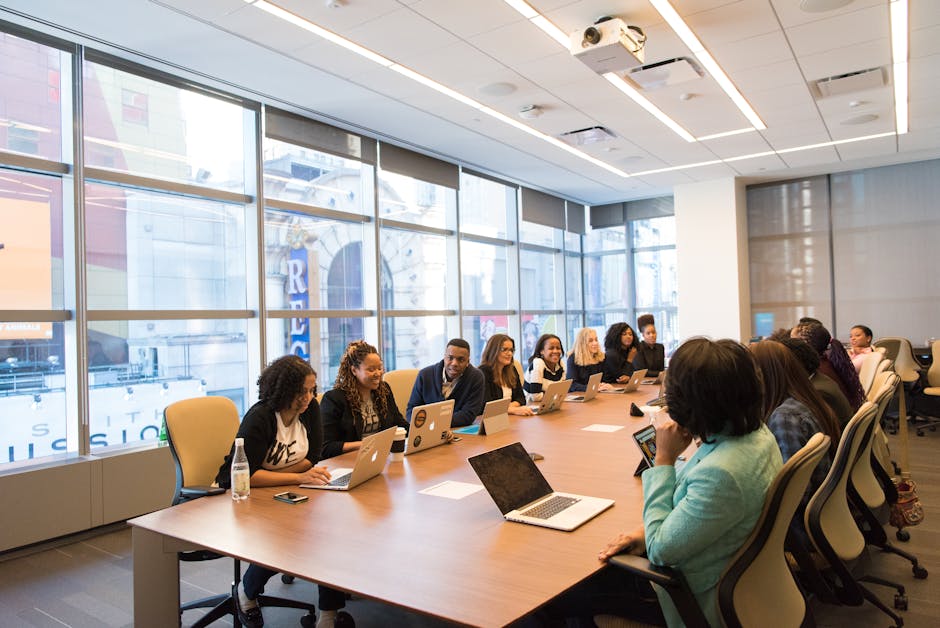Navigating the Future: JP Morgan's Hybrid Working Strategies in the Modern Workplace
“As the corporate world adapts to post-pandemic realities, JP Morgan Chase leads the way with its flexible hybrid working model. This article delves into the financial giant's workplace strategies, comparing them with other industry leaders, and offers insights for organizations seeking to optimize their own hybrid work environments. ”

The Evolution of Workplace Strategies: JP Morgan's Hybrid Approach
In the wake of the global pandemic, companies across industries have been forced to reevaluate their workplace strategies. JP Morgan Chase, one of the world's largest financial institutions, has emerged as a notable case study in adapting to the new normal of hybrid work.

JP Morgan's Flexible Hybrid Model
Despite initial reservations from CEO Jamie Dimon about remote work, JP Morgan has implemented a flexible hybrid working model. The company currently does not mandate office attendance for most employees, allowing teams to work remotely or come into the office as needed. This approach represents a significant shift from traditional banking culture and demonstrates JP Morgan's willingness to adapt to changing employee expectations.
However, the transition hasn't been without challenges. The company has faced scrutiny for tracking office attendance through ID swipes, which has raised concerns among employees about job security and trust. This highlights the delicate balance organizations must strike between monitoring productivity and fostering a culture of trust in a hybrid work environment.
Comparing Workplace Strategies Across Industries
To gain a broader perspective on effective workplace strategies, let's examine how other leading companies are approaching hybrid work:
Tech Giants Leading the Way
- Apple: Requires employees to be in the office three days a week (Tuesdays, Thursdays, and a team-specific day).
- Amazon: Allows individual teams to determine their work schedules, recognizing that one size doesn't fit all.
- Hubspot: Offers three options - @home, @office, or @flex - giving employees the power to choose their work environment annually.
Financial Sector Adapting
- Capital One: Implements a hybrid model with three days in the office per week, balancing remote work efficiency with in-person collaboration.
- Citi: Requires employees to be in the office two days a week, adjusting their strategy based on ongoing pandemic developments.

Key Takeaways for Effective Workplace Strategies
-
Flexibility is Key: The most successful strategies offer employees choices in how and where they work, recognizing individual preferences and job requirements.
-
Trust Your People: While monitoring can provide valuable insights, it's crucial to balance this with trust in your employees' judgment and productivity.
-
Continuous Adaptation: As demonstrated by companies like Apple and Citi, workplace strategies should be viewed as evolving processes rather than fixed policies.
-
Team-Based Decisions: Amazon's approach of allowing team leaders to determine work schedules can be effective, especially in large, diverse organizations.
-
Clear Communication: Regardless of the chosen strategy, clear and consistent communication about expectations and policies is essential for success.
Implementing Effective Workplace Strategies
For organizations looking to optimize their hybrid work environments, consider the following steps:
-
Assess Your Needs: Evaluate your company's specific requirements, considering factors like team collaboration needs, client interactions, and individual job roles.
-
Engage Employees: Conduct surveys and focus groups to understand your workforce's preferences and concerns regarding hybrid work.
-
Invest in Technology: Ensure your office space optimization includes robust digital infrastructure to support seamless remote and in-office collaboration.
-
Create Flexible Spaces: Design office layouts that accommodate various work styles and promote both focused work and collaboration.
-
Develop Clear Policies: Establish and communicate clear guidelines for hybrid work, including expectations for office attendance and remote work productivity.

The Future of Work: Embracing Hybrid Models
As we navigate the post-pandemic landscape, it's clear that hybrid working is here to stay. JP Morgan's journey, along with those of other industry leaders, demonstrates that there's no one-size-fits-all solution. The key to success lies in creating flexible, employee-centric strategies that balance organizational needs with individual preferences.
By learning from these examples and implementing thoughtful workplace strategies, companies can create environments that foster productivity, innovation, and employee satisfaction. As we move forward, the ability to adapt and evolve these strategies will be crucial in navigating toxic workplaces and creating positive, inclusive work cultures.
In conclusion, the future of work is not about choosing between remote and in-office models, but about finding the right blend that works for your organization and your people. By embracing flexibility, trust, and continuous improvement, companies can create workplace strategies that drive success in the new era of work.